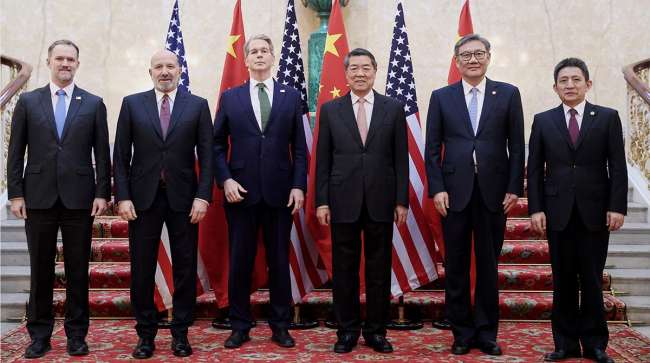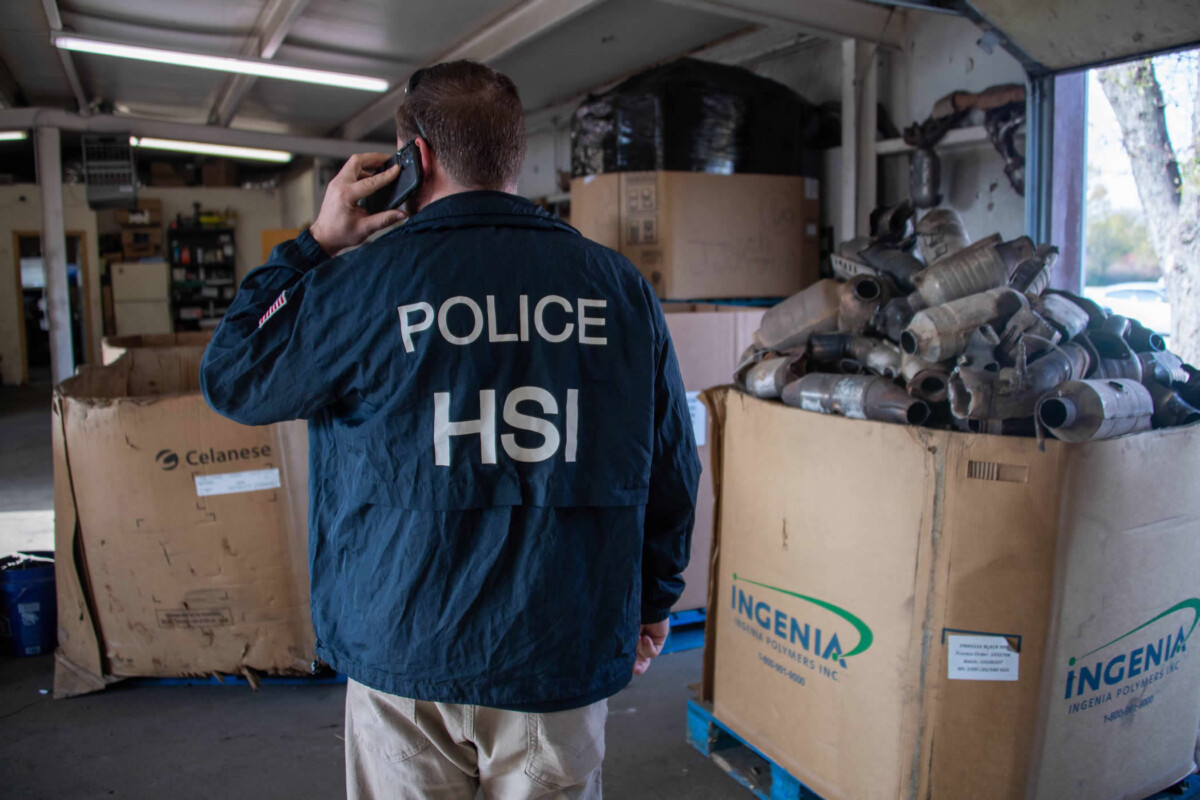From left: Jamieson Greer, Lutnick, Bessent, Chinese Vice Premier He Lifeng and other delegation members on June 9. (Li Ying/Xinhua via AP)
The U.S. and China resumed talks into a second day in London, with financial markets on edge as the world’s largest economies try to agree to allow exports of key tech and industrial goods and avoid escalating their trade war.
The teams led by U.S. Treasury Secretary Scott Bessent and Chinese Vice Premier He Lifeng were reconvening June 10 just after 10:40 a.m. at Lancaster House. The Georgian-era mansion near Buckingham Palace has hosted major addresses by U.K. prime ministers, speeches by central bank governors and parties for Britain’s royal family.
Speaking to reporters as officials arrived, U.S. Commerce Secretary Howard Lutnick said talks are going well and are expected to go all day June 10.
President Donald Trump told reporters at the White House on June 9 that “we are doing well with China. China’s not easy,” adding that he was “only getting good reports” from the nearly seven-hour session June 9. Bessent said after day one they had a “good meeting.”
Lunch break over.. US and China trade talks continuing again. #US #China #Trade This is Vice Premier He Lifeng and asking back in Lancaster House for talks. pic.twitter.com/fjmlOmBE3Z
— Edward Lawrence (@EdwardLawrence) June 10, 2025
Bond and currency markets are closely monitoring the talks for clues on the potential economic impact. The Bloomberg Dollar Spot Index, which has fallen sharply this year as trade tensions undermine confidence in U.S. assets, is around its lowest levels since 2023.
The key issue this week is re-establishing terms of an agreement reached in Geneva last month, in which the U.S. understood that China would allow more rare earth shipments to reach American customers. The Trump administration accused Beijing of moving too slowly, which threatened shortages in domestic manufacturing sectors.
In return, the Trump administration is prepared to remove a recent spate of measures targeting chip design software, jet engine parts, chemicals and nuclear materials, people familiar with the matter said. Many of those actions were taken in the past few weeks as tensions flared between the U.S, and China.
“A U.S. decision to roll back some portion of the technology controls would very much be viewed as a win by China,” said Dexter Roberts, nonresident senior fellow at the Atlantic Council’s Global China Hub. “If we think back to the last administration, the possibility of the U.S. unwinding any controls was pretty much unthinkable.”
A month ago Beijing and Washington agreed to a 90-day truce through mid-August in their crippling tariffs to allow time to resolve many of their trade disagreements — from tariffs to export controls.
At the same time, Trump’s trade team is scrambling to secure bilateral deals with India, Japan, South Korea and several other countries that are racing to do so before July 9, when the U.S. president’s so-called reciprocal tariffs rise from the current 10% baseline to much higher levels customized for each trading partner.
Meanwhile, Chinese President Xi Jinping on June 10 held his first phone conversation with South Korea’s newly elected President Lee Jae-myung and called for cooperation to safeguard multilateralism and free trade.
“We should strengthen bilateral cooperation and multilateral coordination, jointly safeguard multilateralism and free trade, and ensure the stability and smoothness of global and regional industrial chains and supply chains,” Xi said, according to the CCTV report.






